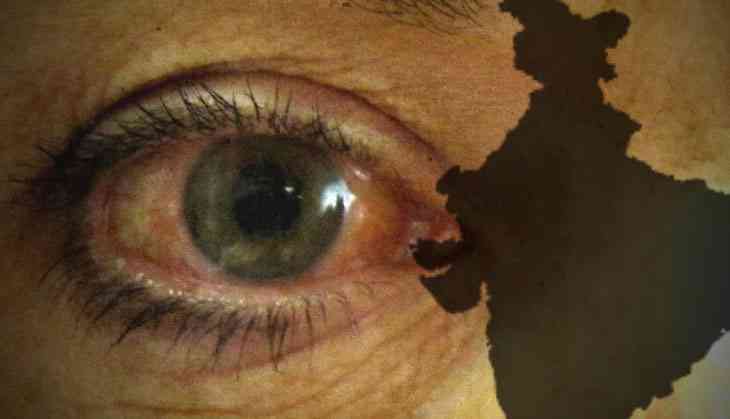World Glaucoma week: Why this threat to eyesight can't be ignored

The medical fraternity across the globe observes the week between March 10 and March 17 as 'World Glaucoma Week' in an effort to drive home the message that Glaucoma or what is commonly known as 'Kala Motia' in Indian parlance cannot be taken lightly.
This seemingly common eye problem can lead to severe loss of vision and blindness and it is only because of this potential to take away sight and leading to darkness in afflicted person’s life that it has drawn the name of 'Kala Motia'.
If one looks at the facts and figures both at the global and India level with regards to eye disorders the statistics is startling and far more glaring in Indian context. According to World Health Organization (WHO) estimates, about 314 million people around the world have impaired vision, due either to eye diseases or need for glasses (uncorrected refractive errors). Of theses, 45 million people are blind. More than 82 per cent of all blind are 50 years of age or above and more than 90 per cent of the world’s visually impaired people live in developing countries like India. The top five causes of blindness are cataract, refractive errors, glaucoma, age-related macular degeneration and diabetic retinopathy. These account for 75 per cent of all visual impairment.
According to Professor SS Pandav of the Post Graduate Institute of Medical Education and Research (PGIMER), “ Glaucoma is third major cause of blindness after cataract and uncorrected refractory errors. Blindness due to cataract and refractive errors is reversible; in contrast, blindness due to glaucoma is irreversible. Glaucoma can not be cured but blindness due to glaucoma can be prevented in majority by timely diagnosis and treatment.”
He added that currently, about 60 million people suffer from glaucoma. This number is expected to increase to 80 million by 2020 due mainly to increase in the aging population. India will be home to about one sixth of these patients.
Another alarming aspect of Glaucoma in India is that an estimated 90 per cent of Glaucoma patients remain undiagnosed thus putting a large population at risk of going blind.
Dr Pandav and his team comprising Dr Sushmita, Dr Srishti Raj and Dr Faizal have been working on this problem and have been trying to create awareness about its timely treatment. They point out that
in reality glaucoma is not one entity but a group of many conditions resulting in blindness through a common pathway. Vision is usually lost due to slow and progressive damage to the optic nerve which is the connection between the eye and the brain. Eyes capture the image and send it to the brain for recognition and further interpretation, through optic nerve. If optic nerve is damaged the brain will not receive any image and hence will not see anything even if rest of the eye is normal.
“The cause of optic nerve damage in glaucoma can be due to many reasons. But mostly it happens to increased pressure inside the eyes. Eyes are like a ball and maintain its shape it needs to be inflated with some pressure otherwise it will collapse. But when this pressure becomes too high then it damages the eye. Like blood pressure eye pressure also need to remain in normal range,” Dr Pandav explains.
The most dangerous aspect of Glaucoma is that it is a silent disease, as majority of glaucoma patients have no symptoms until the disease is quite advanced. For this reason it is also known as 'Silent thief of sight'. If left undetected and untreated, it can lead to irreversible blindness due to permanent damage to the optic nerve. As glaucoma has no symptoms, it remains undetected until it is too late. Glaucoma not only increases the burden of blindness in the society but also causes enormous burden of direct and indirect treatment costs since the treatment is life long and medicines are costly.
Research done at the Advanced Eye Center of the PGIMER over a few years suggests that families of glaucoma patients incur significant burden of care with reduction in quality of life of the entire family.
According to experts Glaucoma can occur at any age but generally it affects people above 40 years of age and the risk increases as the age increases. People over 60 years of age are six times more at risk than population at large. People with high ‘eye pressure’ and people with a family member having Glaucoma are particularly at risk along with certain ethnic groups and people with diabetes.
Dr Pandav and his team assert that since glaucoma may not have any symptoms, periodic eye checkup is of utmost importance for early detection. Some people may see colored halos around lights and have mild blurring of vision in the evenings. Such people should consult an eye doctor without delay.
Otherwise, whenever one visits an eye doctor for reading glasses, he or she must insist on checkup for Glaucoma which includes measuring ‘eye pressure’, examining the optic disc for any damage and evaluation of drainage angles of the eye. This checkup should be done by an eye specialist and opticians who make glasses are generally not trained to do this.
Experts say that the aim of treatment is to prevent further damage and preserve the remaining visual function and this is best achieved by reducing ‘eye pressure’. In most cases this can be done by using eye drops. Some people need lasers or surgery to control the disease.


